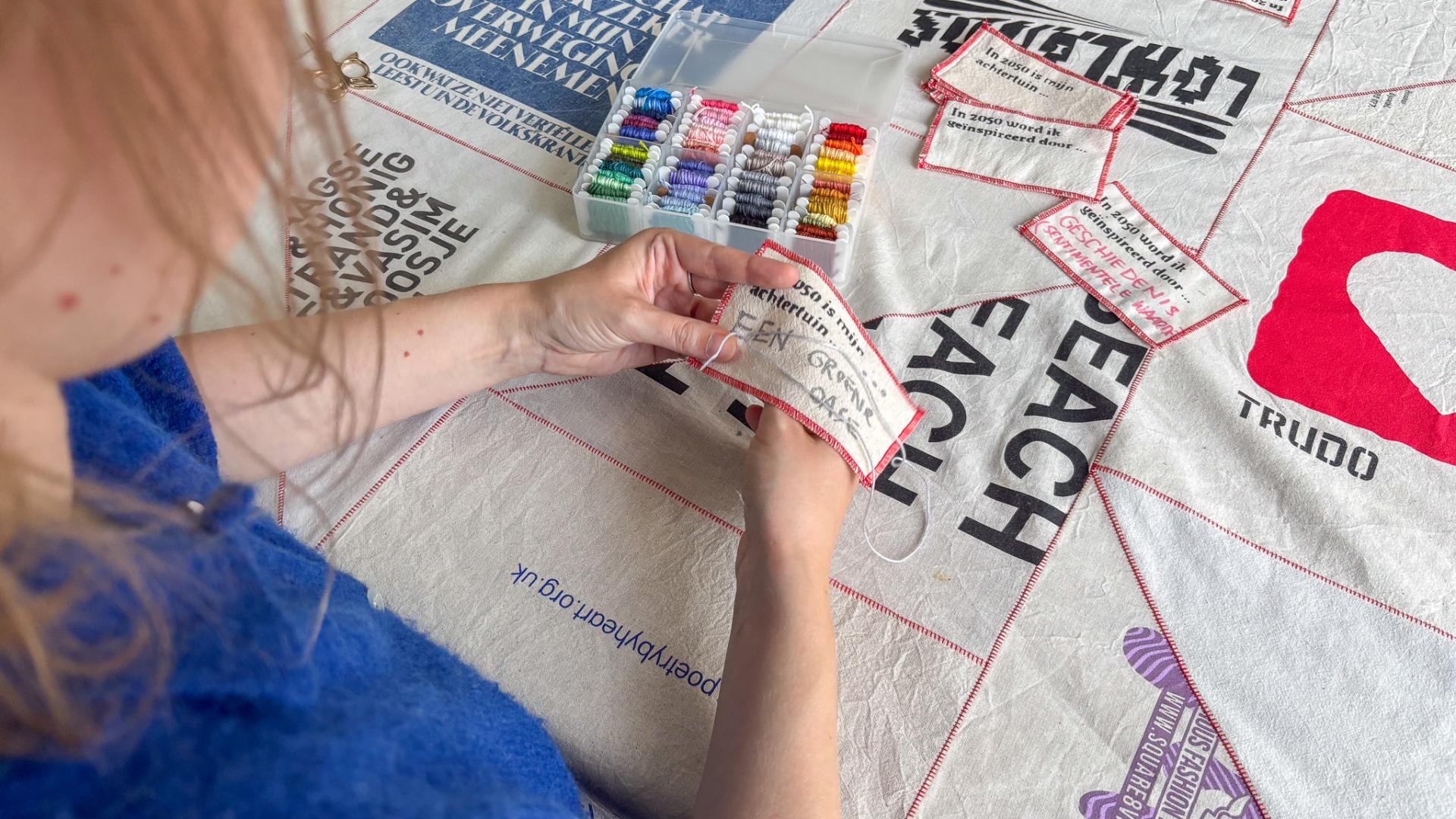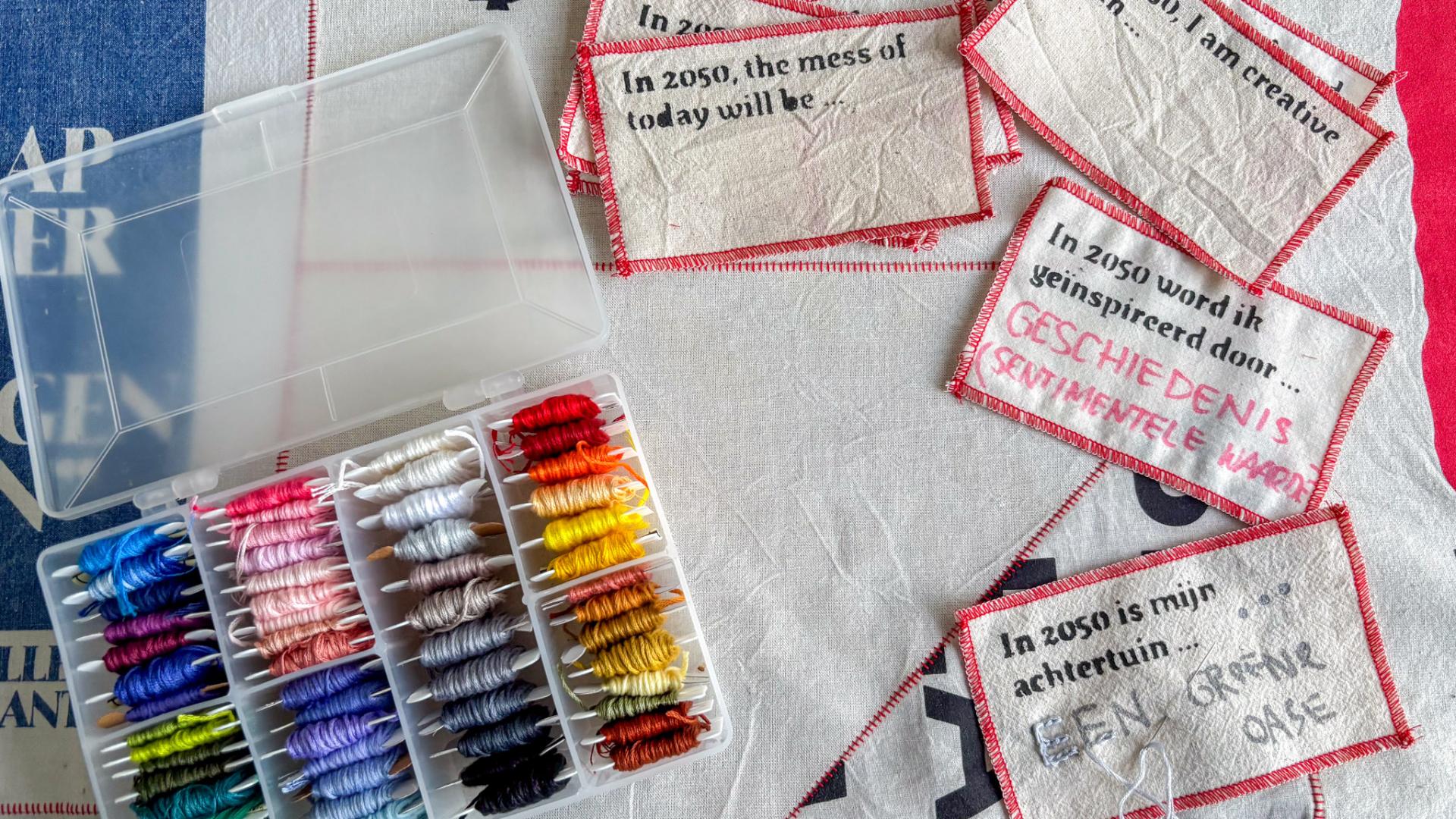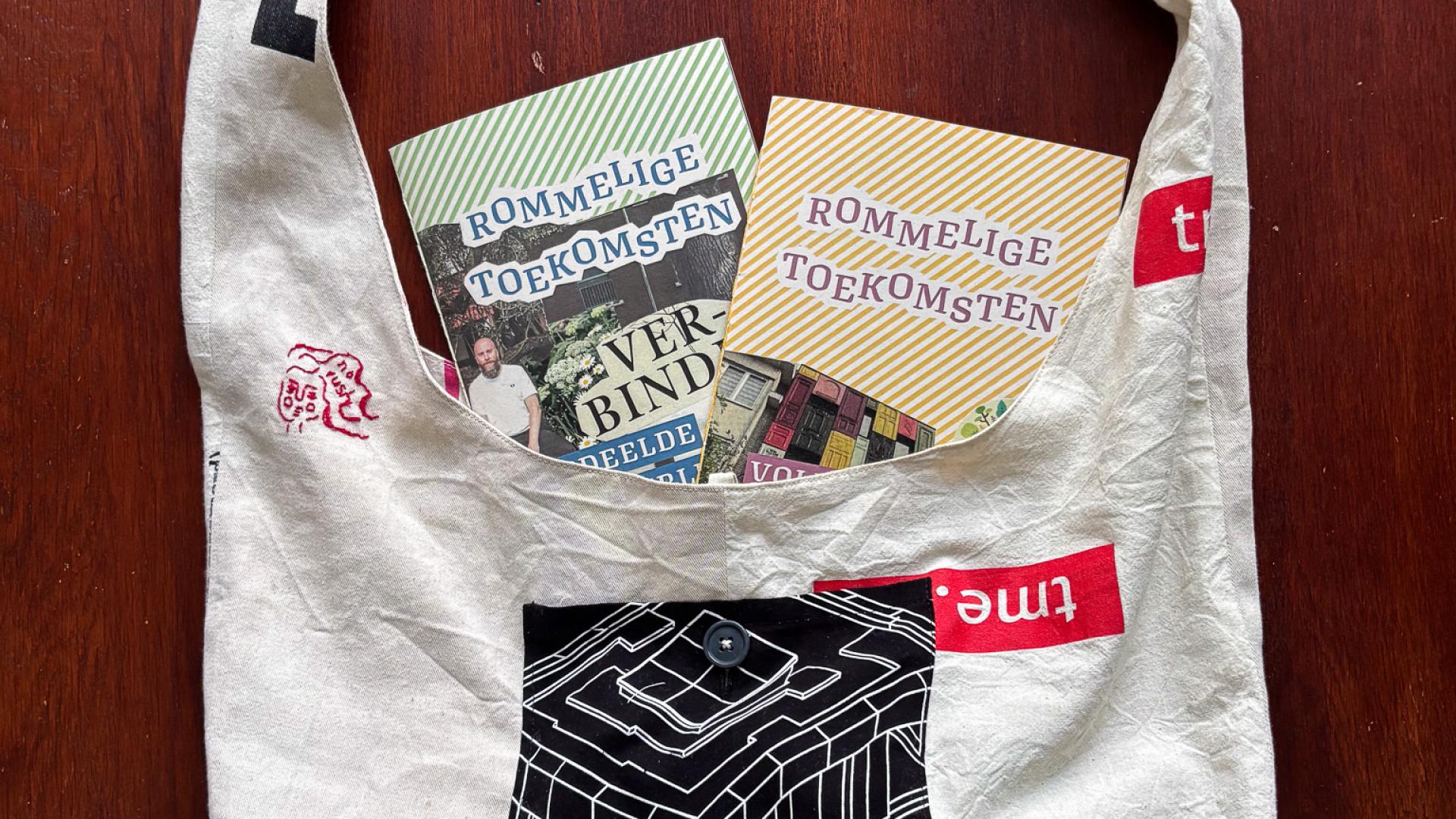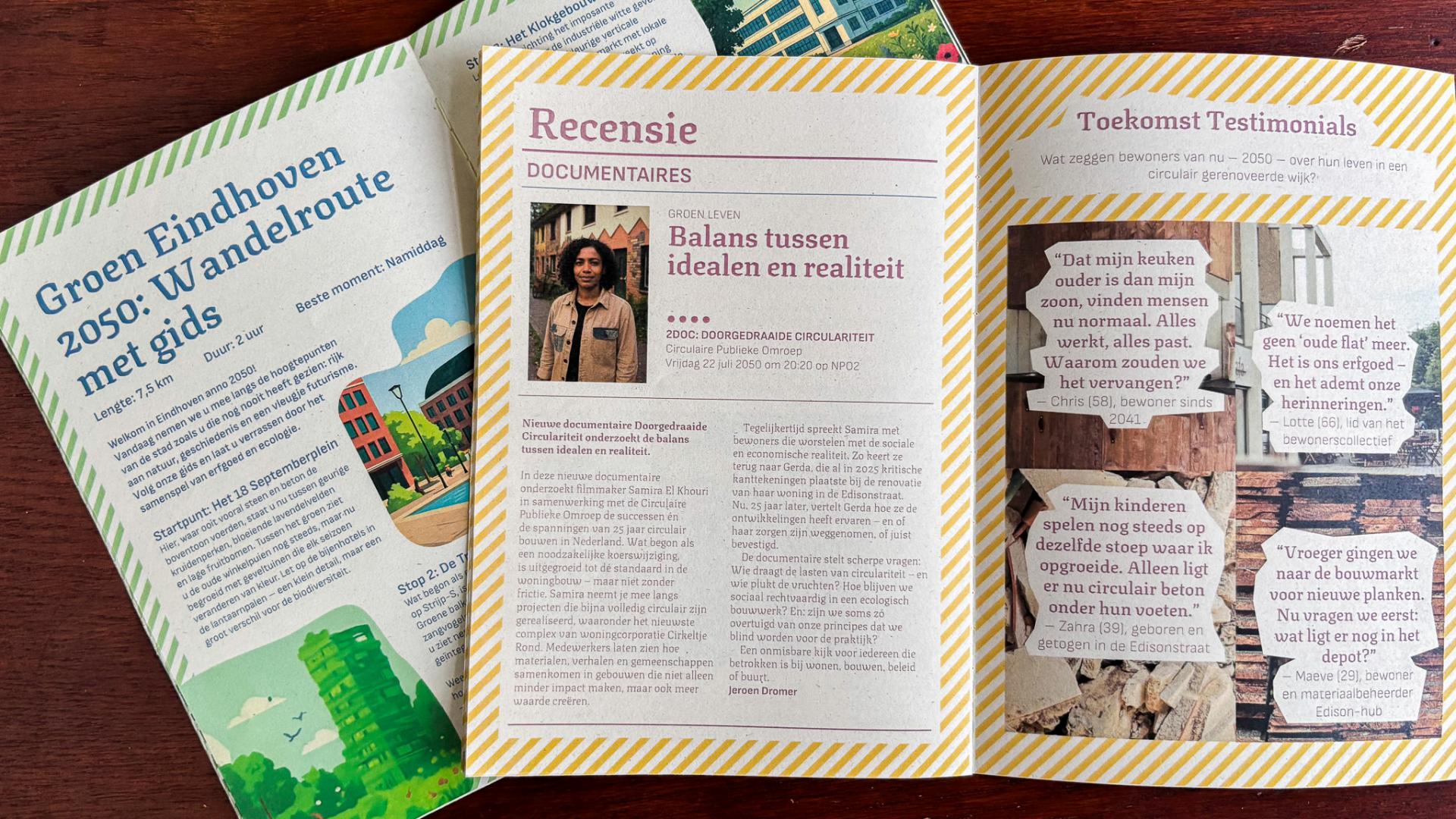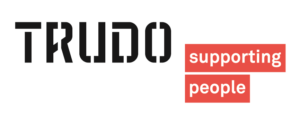Messy Mundane
Messy Futures is a speculative design project that focuses on the ordinary and everyday aspects of living in 2050. Instead of presenting the future as a polished, seamless narrative, it highlights the messy, contradictory, and layered nature of daily life: kitchens that mix old and new, streets where wild plants reclaim space, and communities where trading replaces buying. By shifting attention towards the mundane, Messy Futures suggests that the future is best shaped through looking at daily existence. Mess is treated not as waste but as a resource: leftovers that can spark creativity, rewilding projects that support biodiversity and material improvisations that spark circular ways of living. In this way, the project proposes that futures are not clean slates but patchworks: imperfect, collective, and dynamic.
Participatory Installation
At Dutch Design Week, Messy Futures comes to life as a participatory installation. A long communal table, draped with a patchwork tablecloth made from recycled tote bags, forms the centre. On the table are speculative objects and narratives: a gardener’s apron stitched from discarded textiles, designed for community care of urban green; a neighbourhood map where asphalt gives way to green corridors for both people and insects; a kitchen reconstructed from salvaged building panels that looks as good as new. These scenarios are provocations—small windows into how circularity, creativity and biodiversity might be expressed in everyday life. Visitors are invited to contribute their own visions of 2050. They write short reflections on fabric patches, which are then sewn onto the tablecloth. Over the course of the week, the cloth grows denser, messier and more alive, becoming a living record of collective imagination.
Artist in Residence at Trudo
Messy Futures approaches design as an open, collective practice. Futures are not singular, coherent stories but layered, contradictory, and shared. By combining speculative design with co-created scenarios and public contributions, the project demonstrates how imagination itself can be circular and regenerative. The project originated during my residency at Trudo, an innovative social housing corporation in Eindhoven. They invited me to explore future scenarios around living in 2050 and to inspire both colleagues and external audiences. Workshops with Trudo colleagues provided many of the seeds for the speculative objects and narratives, grounding the work in lived perspectives while expanding it beyond the organisation into the public realm. At Dutch Design Week, the project culminates in an installation that grows with each contribution. It does not end with answers, but with a question posed to every visitor: if the future is messy, what kind of mess do we want to create together?

 Partially wheelchair accessible
Partially wheelchair accessible
